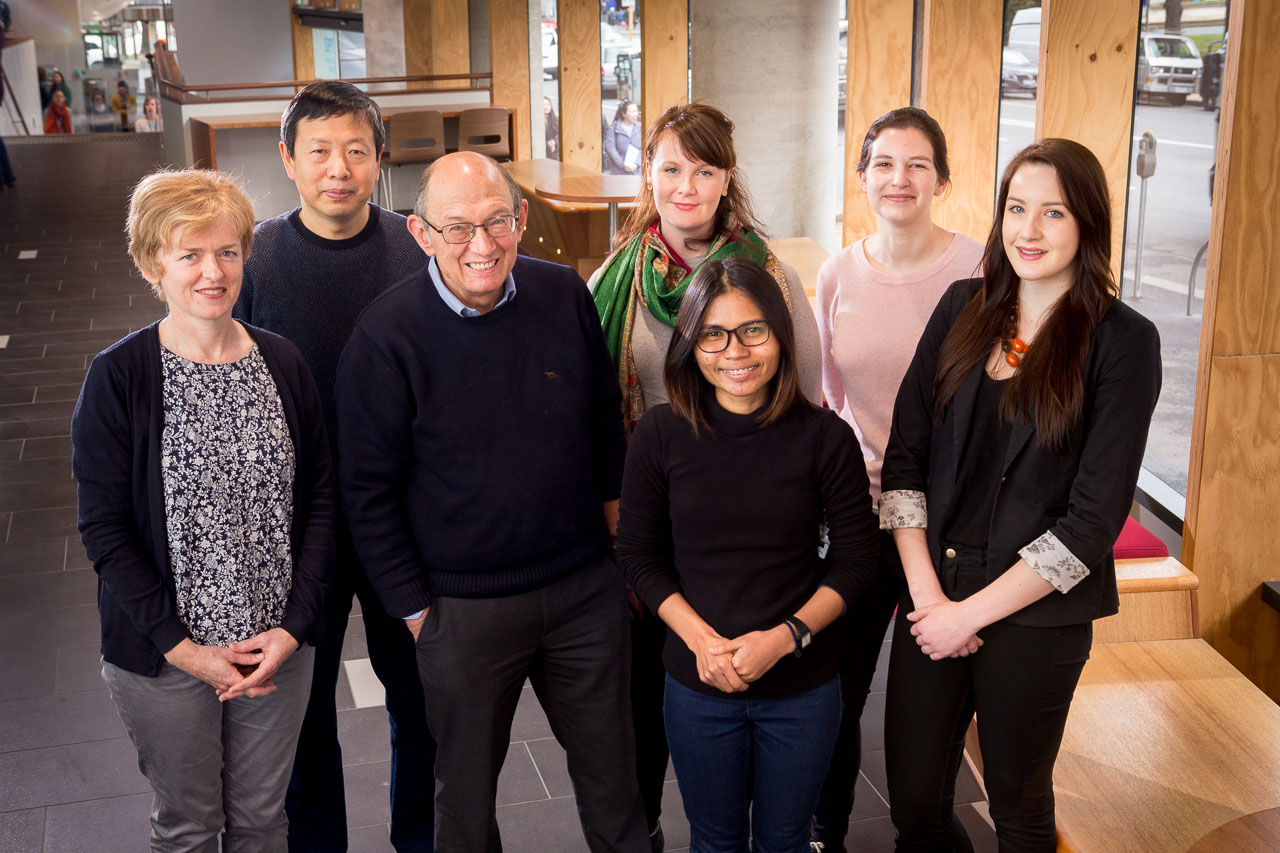-
Research Groups
-
Robins-Browne Group
Research in Roy’s laboratory is partly focused on how E. coli causes diarrhoea, with the aims of identifying better ways to diagnose, treat and prevent these infections. Another theme is the development of new types of antibacterial agents.
Other work areas include:Enteric infections, Immunology
Current Projects
-
Characterisation of enteropathogenic E. coli
Enteropathogenic E. coli (EPEC) is a leading cause of diarrhoea and death in children in non-industrialised countries. Roy’s group are investigating the phylogenetics of EPEC to improve their understanding of how different sub-types of these bacteria develop and spread. A key objective of this work is to identify potential virulence-associated genes in so-called atypical strains of EPEC that could be used to detect these bacteria in clinical samples, and as targets to block their virulence. Their research in this area includes the development of computer-based methods to subtype individual strains of E. coli and predict their susceptibility to antibiotics.
-
Development of new types of antimicrobial agents
The increasing resistance of bacteria to antibiotics poses an urgent health problem worldwide. As all current antimicrobials act by interfering with bacterial growth, they tend to select for resistant bacterial variants. A focus of Roy’s group’s research is to develop novel classes of antimicrobials that act selectively on bacterial virulence without affecting growth. Potential advantages of such agents are that they are unlikely to select for resistant forms, and that they will not interfere with the commensal bacteria which normally live in the gut. In this regard, they have discovered the first antibacterial that inhibits a key virulence regulator by blocking its ability to bind to DNA. As predicted, this agent does not select for resistant variants or disrupt the gut microbiota.
Lab Team

-
Senior Research Officer
-
Dr Marija TauschekSenior Research Officer
-
Dr Dianna HockingResearch Officer
-
Ms Danielle InglePhD student
-
Ms Jayne ManningPhD student
-
Ms Sutthirut SrisuwanVisiting PhD student
-
Ms Carla HodsonM Phil student
-
Ms Rachel PascoeM Biomed Sci student
-
Mr Wayne ZhengUROP student
-
Centre for Antibiotic Allergy and Research
The Centre for Antibiotic Allergy and Research focuses on translational drug allergy diagnostics, health services interventions and antibiotic allergy clinical trials.
Other work areas include:Public Health
-
Howden Group
Research from Professor Ben Howden’s group research uses genomics, molecular biology, epidemiology and clinical studies to address a broad range of issues related to invasive bacterial diseases in humans, especially those caused by staphylococci, enterococci and other antimicrobial-resistant species. Additionally, working closely with scientists in the MDU PHL, they investigate the epidemiology, evolution, and spread of bacterial pathogens of public health significance such as Neisseria gonorrhoea, Listeria monocytogenes, Shigella and Salmonella spp., Legionella spp., and carbapenemase-producing gram-negative bacteria.

Professor Benjamin Howden
Director Of Microbiological Diagnostic Unit (MDU) Public Health Laboratory
-
McVernon Group
Jodie McVernon’s group uses established and emerging biostatistical, epidemiologic and modelling methods to address infectious diseases questions of public health relevance. We bring a suite of collaborators from animal health and ecology to provide a ‘One Health’ perspective on emerging human pathogens.
Other work areas include:COVID-19, Viral Infectious Diseases, Public Health
-
National Centre for Antimicrobial Stewardship
The National Centre for Antimicrobial Stewardship (NCAS) is a health services research program that aims to improve the use of antimicrobials across animal and human health, to influence national policy, and to generate a research workforce across nurses, pharmacists, doctors and veterinarians. NCAS aims to lead and facilitate the embedding of antimicrobial stewardship (AMS) within clinical practice across diverse healthcare settings and among different practitioner groups in Australia. Its research and surveillance programs aim to improve antimicrobial prescribing by understanding prescribing behaviours through qualitative and quantitative methods, monitoring current prescribing patterns across healthcare settings, identifying targets for quality improvement, and developing interventions, new policies and practices.
-
Stinear Group
Tim Stinear’s group’s research addresses priorities across four connected themes that including hospital superbugs, pathogenic mycobacteria, natural product discovery and public health genomics that aim to understand and contain the spread of bacteria causing serious human disease.
-
Tong Group
Steve’s group conducts clinical trials to optimise the treatment of infections due to methicillin-resistant Staphylococcus aureus and other bacterial pathogens. He also investigates the epidemiology and genomics of streptococcal infections, hepatitis B, influenza, and antimicrobial resistance in Australian Indigenous communities.
Other work areas include:Staphylococcus aureus, Immunology, Viral Infectious Diseases, Bacterial and Parasitic Infections, Public Health
-
VICNISS
The VICNISS Coordinating Centre provides a state-wide, standardised surveillance service for healthcare associated infections (HAIs) and related events. The goal of VICNISS is to monitor and reduce the incidence of HAIs, providing support for health services in Victoria. VICNISS aims to support Victorian health services to carry out international best practice surveillance and analysis, and to lead interventions for quality improvement to improve the health of all Victorians.
VICNISS provides a source of high quality data for regular performance monitoring, and for a valuable resource for the research community. Over the time of VICNISS surveillance, infection rates in key areas of focus have fallen markedly, reducing the significant financial and personal cost of these infections on both individual patients and the health system.
VICNISS collaborates with the National Centre for Antimicrobial Stewardship (NCAS), with a major involvement in aged care NAPS (ac-NAPS). VICNISS is also engaged by DHHS Residential Aged Care Services to carry out monitoring of infection control indicators in Victoria’s public residential aged care services, including participation in ac-NAPS.
-
Globally, it is estimated
that 700,000 people die
from drug-resistant infections each year







